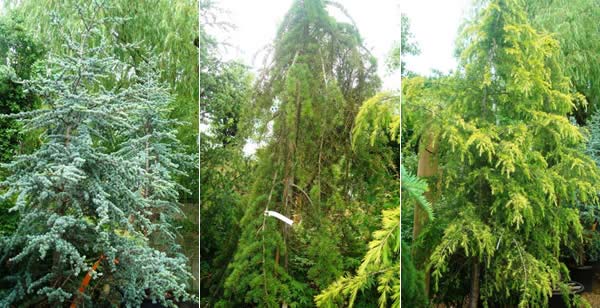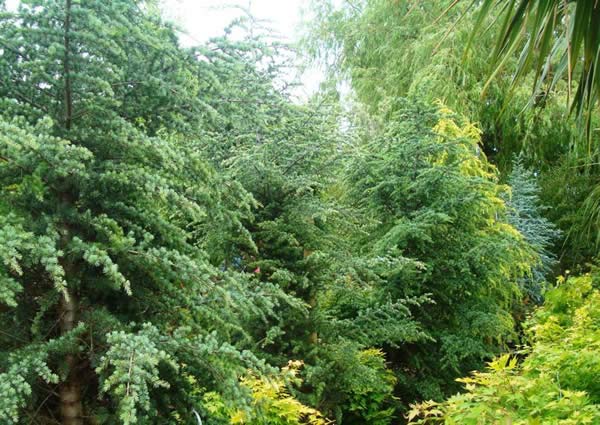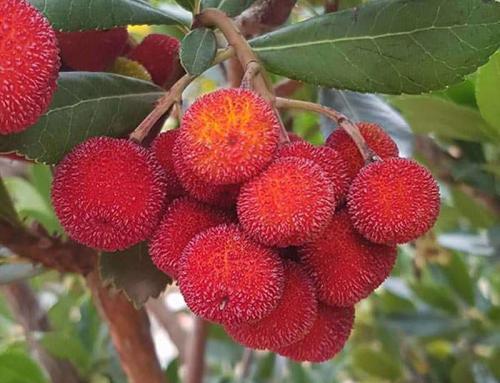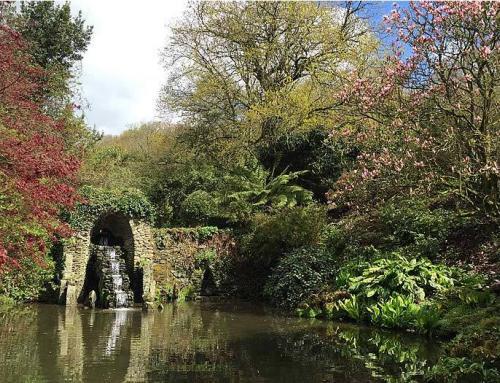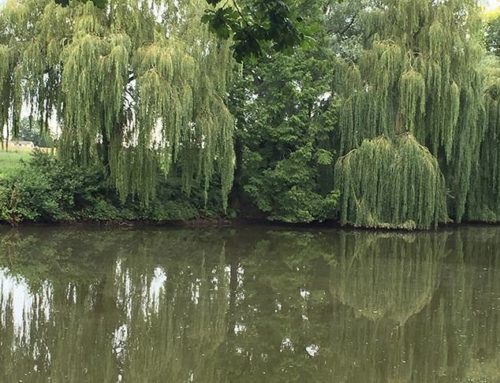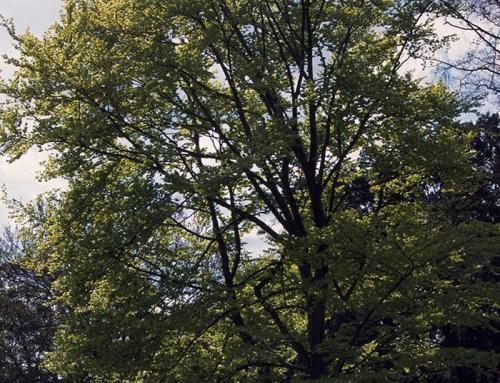Cedar trees are majestic trees that will create an immediate impact in any garden. Looking at these amazing evergreen trees over the last few weeks they seem to have flourished, even more than usual, following last year’s severe winter. They form part of the pinaceae or pine family and enjoy extremes of temperature and grow naturally in mountainous regions. Cedars are native to the Himalayas so are very frost hardy and wind resistant trees.
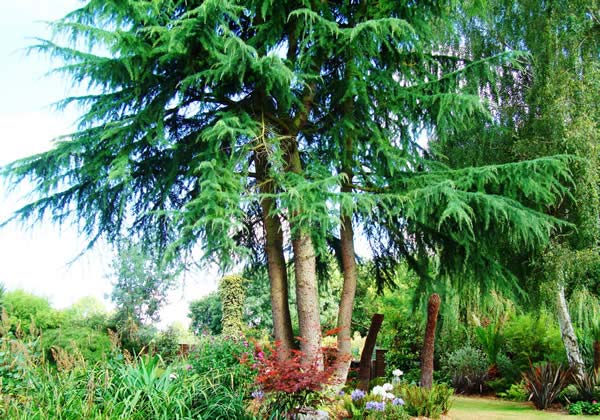
Cedar Tree underplanted with colourful shrubs
These trees can be used as an ornamental feature in the centre of the lawn or garden, as a hedge to form a windbreak or as an evergreen tree to create screening in a large border. If left unpruned they will reach heights over 10m.
Cedar trees have a long life and some are known to have lived as long as 800 years. Found in older cedar trees the aromatic cedar oil is created following natural evaporation. Cedar produces excellent wood used by Native Americans for building houses, totem poles, coffins and canoes. Cedar trees attractive wildlife including birds to nest in their wide spreading branches.
Cedrus Atlantica Glauca aka Blue Atlas Cedar Tree This large blue cedar is native to the Atlas Mountains in North Africa. The needles of the tree are a vibrant bluey grey. The Tree is very easy to maintain and it is very frost hardy.
Cedrus Atlantica Pendula aka Weeping Blue Atlas Cedar This Cedar is a weeping variety and has similar bluey/green needles to the Atlas Cedar but its branches grow elegantly downwards.
Cedrus Libani or Cedar of Lebanon Tree Originating from Syria this Cedar is dark green and conical in shape with sharply pointed needles. It has become a tree well-known in traditional British landscapes for its sweeping outward spreading branches.
Cedrus Deodara Aurea This Cedar is known as the Golden Deodar or Cedrus Deodara Aurea. Its needles are bright golden yellow when they first appear in early summer and change to green/yellow. Another conical shaped Cedar but with very vibrant yellow foliage. Cedars are trees which have been used in the UK for hundreds of years and have become a main feature in many traditional British Landscapes, one of the choice trees used by Capability Brown in his landscape designs.

